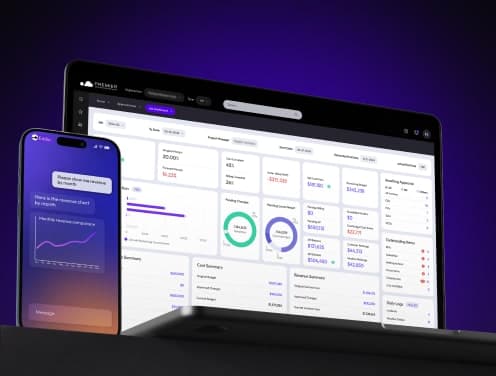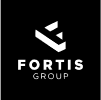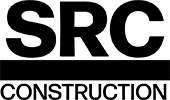
Benefits of AI for Construction Management
The construction industry is changing rapidly as AI technology reshapes how things work. By 2029, the AI construction market will hit US$11.85 billion, growing at 24.31% annually. Construction companies are racing to adopt this technology because it brings remarkable advantages to every step of building projects.
Construction management's biggest challenges now have AI-powered solutions. Leaders in the field are taking notice - 76% plan to invest more in AI, which is 9% higher than last year. This surge makes sense because AI enhances everything from preconstruction planning to active building and maintenance after completion. The technology does more than just improve efficiency - it helps reduce waste and carbon emissions in a sector that generates over one-fifth of global carbon emissions.
Construction projects today are seeing AI's benefits firsthand. Project managers use AI platforms to get better results with scheduling, resources, and risk management. Companies of all sizes can now use these tools, not just the industry giants. Your competitors might already have an edge if you haven't started using AI tools in your construction business. This piece shows how AI can revolutionize your construction operations and boost your profits.
Understanding AI in Construction Management
AI in construction encompasses technologies that mimic human intelligence to handle tasks requiring human thought processes. These systems analyze huge amounts of data live, find patterns, give insights, make accurate predictions, and suggest ways to optimize efficiency.
AI isn't just another tech buzzword, it's a practical tool that's already changing how teams plan and execute construction projects. The core strength of construction AI lies in its ability to analyze project data and solve complex problems without explicit programming.
The technology spots patterns in data from multiple sources that humans might overlook. Teams can use AI throughout their project's entire lifecycle, from preconstruction planning to postconstruction maintenance. This helps them improve design, building processes, and maintenance work.
Let's talk about real results: an AI chatbot could save your team five minutes on simple tasks, while AI predictive analytics might save $5 million by suggesting key changes to your project schedule. These advantages come from automation that completes routine tasks quickly and accurately.
How machine learning supports project decisions
Machine learning, which falls under the AI umbrella, uses algorithms and statistical models that help computer systems learn from data without explicit programming. ML powers many AI tools you probably use daily, from facial recognition to voice-to-text.
Construction project managers can use ML algorithms to:
- Analyze real-time data to review multiple schedule scenarios
- Compare past and current project portfolios for resource optimization
- Identify which teams need specific machinery and when
- Forecast potential delays due to weather conditions or other factors
These capabilities mark a transformation in project decision-making. Construction leaders now make use of information for better choices instead of relying only on past experience or gut feelings. ML helps make better decisions by processing complex datasets and spotting connections that manual review would miss.
ML can analyze past project data to predict safety risks, optimize resources, and improve cost estimates and scheduling. Project managers can now prevent problems instead of just reacting to them.
The role of data in AI-driven construction tools
Quality data forms the foundation of every effective AI system in construction. AI tools need large amounts of well-organized, high-quality data to work properly. Modern construction projects create massive amounts of digital information, from budgets and schedules to supply chain logistics and workforce details.
The numbers are impressive. Large infrastructure projects generate an average of 130 million emails, 55 million documents, and 12 million workflows. Managing this information would be impossible without AI.
Your construction data needs proper organization and integration for AI to deliver useful results. Many companies face challenges because their tech platforms don't connect well, which leaves data isolated and unused. The answer lies in choosing connected construction platforms that keep all information in one place.
Well-implemented AI tools turn this data into practical insights through:
- Live analysis to support decision-making
- Interactive dashboards displaying project status updates
- Predictive analytics for early problem detection
- Progress tracking against schedules and budgets
Why Construction Management Needs AI Now
AI adoption has become crucial for the construction industry to overcome its current challenges. Construction companies in North America can't rely on traditional approaches anymore in this ever-changing digital world. Let's get into why AI plays such a vital role in construction management today.
Labor shortages and rising material costs
The construction sector struggles with a major workforce crisis while building needs continue to grow. Recent data shows the industry had 382,000 job openings each month between August 2023 and July 2024. A concerning trend adds to this problem - one in four construction workers is over age 55 and will soon retire.
Projects spend 20% to 50% of total costs on labor. Finding skilled workers gets harder each day, which causes delays, errors, and budget issues. Material costs make things even tougher. Price changes force contractors to keep adjusting their budgets, which often leads to slim profits or losses.
AI offers solutions through smart workforce management. Companies using AI-powered scheduling systems have reduced project timelines by 15%. These tools look at worker availability, skills, and equipment needs to make the best use of resources during worker shortages.
Complexity of modern construction projects
Today's construction projects have grown far more complex than ten years ago. The Infrastructure Investment and Jobs Act has doubled the pace of construction for manufacturing since 2021. Technology-critical infrastructure like data centers and semiconductor manufacturing facilities need sophisticated work from multiple fields.
Construction complexity shows up through:
- Interdependent systems that need precise coordination
- Stricter regulatory compliance requirements
- More choices in material selection
- Complex design and engineering needs
The numbers tell the story - 98% of megaprojects go over budget by more than 30%. AI helps handle this complexity by processing huge amounts of project data to make better decisions, spot potential problems early, and use resources wisely.
AI-powered tools now handle basic tasks like bricklaying, painting, and welding. This cuts labor costs and speeds up projects. BIM tools with AI create digital building models that help different trades work better together.
Need for faster, data-backed decisions
Old-school decision-making in construction relies on manual work that increases errors and slows down progress. This creates problems with accountability, inconsistent choices, and lack of transparency.
Construction creates massive amounts of data. Big infrastructure projects generate 130 million emails, 55 million documents, and 12 million workflows on average. Making sense of all this information becomes impossible without AI.
Informed decision-making offers key benefits:
- Improved accuracy - Data reduces the chance of errors
- Faster response times - Immediate insights enable quick changes
- Pattern recognition - AI spots trends humans might miss
- Resource optimization - Predictive analytics helps use resources better
Studies show companies that separate themselves through data and analytics perform better than their competitors. AI tools study past project data, material usage, and supply chains to cut waste and avoid ordering too much, which saves money.
Data-driven construction tackles the industry's biggest challenges head-on. AI monitoring spots potential equipment problems before they cause expensive downtime. This move from reactive to proactive management helps teams avoid costly delays and manage project risks better.
AI for Safer Construction Sites
Construction industry's biggest problem remains safety. AI technologies now make worksites safer through environmental monitoring, hazard detection, and automated incident reporting.
Computer vision for PPE and hazard detection
Computer vision technology has changed safety compliance monitoring on construction sites. AI systems employ cameras and advanced image recognition algorithms to spot workers without required safety equipment like helmets, vests, and other personal protective equipment (PPE).
Today's AI-powered PPE detection systems show remarkable results, over 83% identification and 95% recall ratios. These systems never tire or lose focus as they provide round-the-clock safety oversight that human supervisors cannot match.
Computer vision excels in complex environments. Advanced models can spot safety violations accurately despite challenging conditions like varying light, shadows, and complex activities. The technology now recognizes eight different types of helmets and safety gear, plus nine distinct worker postures that might signal unsafe behavior.
ViAct, a computer vision system, watches video feeds to catch safety violations as they happen. Supervisors receive instant alerts when the system detects issues, like missing safety gear or unauthorized access, allowing them to step in before accidents occur.
Predictive safety alerts using IoT sensors
Modern construction sites rely on Internet of Things (IoT) sensors as the foundation of their predictive safety systems. These connected devices gather up-to-the-minute data about equipment conditions, environmental factors, and worker health.
Equipment monitoring through IoT sensors tracks vital parameters such as temperature, vibration, and engine performance. Cloud platforms receive this data where smart algorithms detect early signs of equipment wear. This approach reduces downtime incidents by 25-30% and boosts asset use by 10-15%.
Worker safety gets a boost from wearable IoT devices that monitor health. SmartCap technology, to cite an instance, tracks brain activity to catch early signs of fatigue and drowsiness. Workers and supervisors get immediate alerts when these smart wearables detect concerning patterns, enabling quick action before accidents happen.
IoT plays another vital role in construction safety through environmental monitoring. Air quality and noise level measurements contribute to a 15% drop in work-related illnesses. Site sensors can detect toxins in air or building materials and alert teams before worker exposure.
Incident reporting automation with NLP
Accidents still happen on construction sites despite prevention efforts. Natural Language Processing (NLP) technology has changed how teams document and analyze these incidents.
Old-school incident reporting depends on handwritten entries that cause delays and slow down analysis. NLP-based systems solve this by automating the process. Workers now report incidents by speaking into mobile devices, and NLP algorithms create detailed reports in seconds instead of minutes.
The system processes verbal inputs from staff members and extracts essential data through context interpretation. Reports automatically include reporter details, role, time, description, context, severity level, root cause, and suggested actions.
These automated systems have improved efficiency and accuracy significantly. Construction companies can now meet OSHA's requirements to report workplace fatalities within eight hours and serious injuries within twenty-four hours. Report quality improves as the system asks specific follow-up questions based on context, like getting more details about chemical spills.
AI safety technologies' combined effect shows impressive results. Sites using wearable safety monitoring systems see 40% fewer accidents and injuries. Construction companies protect their workers better while boosting productivity and avoiding pricey project delays by switching from reactive to proactive safety management.
Boosting Project Planning and Scheduling Accuracy
AI application in construction shows great promise, especially in project scheduling. Modern AI tools are changing how construction teams plan and adapt their schedules when things don't go as planned.
AI-generated baseline schedules
Construction teams used to spend days creating detailed schedules manually. AI algorithms now build these baseline schedules within hours. Teams can start their tasks earlier while getting better accuracy.
"With nPlan as a delivery partner, we're able to take a new approach to analyzing our schedules, removing human bias in favor of learning from actual data and historical performance," reports one construction executive.
The real power of these systems comes from analyzing massive amounts of data. AI scheduling platforms learn from 750,000+ historical schedules worth over $2 trillion in construction spending. This deep learning helps spot risky activities early, so teams can fix problems before they affect project timelines.
The numbers tell the story. Companies using AI-powered generative scheduling see:
- 17% reduction in project duration
- 14% labor cost savings
- 12% equipment cost savings
Scenario modeling for resource allocation
AI's biggest advantage in construction scheduling is running "what-if" analyzes at scale. Regular resource management can't keep up with construction projects' changing nature, especially when juggling multiple projects.
AI does scenario modeling well. It evaluates different schedule options by changing resource allocations. A system dynamics researcher explains, "Switching resources through dynamic allocation ensures that a project can be delivered on time even when there is no free resource capacity".
These tools look at how different factors work together - equipment availability, crew productivity, procurement timelines, and weather. They run thousands of possible scenarios quickly to find the best path forward.
This feature proves valuable for resource-limited situations. AI scheduling tools help teams use labor and equipment better, which cuts down on wasted time. Teams can work efficiently even when moving between different sites.
Forecasting delays using historical data
Construction rarely goes according to plan. AI has changed how teams spot and handle possible delays.
AI forecasting systems look at jobsite histories, sensor data, time logs, material availability, and weather conditions. They see how changes in one area affect the entire project timeline, unlike traditional methods that look at each factor separately.
Advanced systems can flag potential disruptions 2-4 weeks before they occur. Project managers can then fix problems early by moving work around, adjusting crews, or using backup plans.
"AI identifies risky activities so you can tackle them before they become issues," explains one AI platform provider. These systems keep learning as projects move forward and adjust their forecasts based on real performance data.
AI-powered scheduling tools help construction teams stay ahead of problems instead of just reacting to them. Managers can spot early warning signs and step in before delays happen. This leads to more reliable timelines, better resource use, and improved project results.
Improving Cost Control and Budget Forecasting
Construction projects live or die by financial control. AI provides powerful tools to manage budgets better throughout the project lifecycle.
Real-time cost estimation with AI tools
The old takeoff processes used to eat up countless hours. AI-powered estimation software has changed everything. Companies that use these tools can complete 90% of takeoffs in minutes instead of hours. This speed boost doesn't hurt accuracy, it actually makes it better.
Today's AI estimation platforms can detect, measure, and label project spaces on architectural plans automatically. These systems pull quantities straight from PDFs and BIM models with computer vision technology. The time savings are huge, some estimators say their projects move weeks faster.
Speed isn't the only advantage, these tools are incredibly accurate. AI algorithms compare calculations with thousands of past projects and flag unusual totals (like "labor 18% below peers" or "materials 12% above baseline"). This helps catch estimation errors you might miss until budget reviews.
Cloud-based AI systems also let teams work together in real-time. Everyone sees the same quantity data that updates automatically in estimates. A construction executive puts it well: "Togal.AI has automated the takeoff process and made our days much more efficient".
Detecting budget risks early with predictive analytics
AI shines at spotting budget issues before they become major headaches. Unlike traditional approaches, AI-powered forecasting watches continuously rather than checking at specific times.
Advanced predictive models spot patterns and potential cost drivers that regular methods might miss. To name just one example, artificial neural networks can predict cost overruns based on project size, contract type, and project manager skill levels. This early warning lets teams fix problems before they grow.
On top of that, natural language processing watches project communications for cost-related language as it appears. The system spots phrases like "add two more conference rooms" in emails or meeting notes, checks historical pricing, and updates budget projections right away.
Machine learning algorithms scan construction contracts to find risk clauses, insurance requirements, and payment terms. This protects your bottom line by showing potential financial risks before they hit your budget.
AI in procurement and material selection
Budget overruns often stem from material costs and procurement inefficiencies. AI tackles these challenges through smart market analysis and supplier selection.
AI procurement systems keep constant watch on material markets. They pull live pricing data and analyze historical patterns alongside economic indicators. These systems send instant alerts when materials like steel show signs of price spikes, suggesting forward-buy amounts and alternative materials.
The efficiency gains are impressive. AI and related technologies cut product selection and quoting time by up to 80%. Distributors can respond faster, work with more buyers, and suggest better options for projects.
Teams focused on sustainability can use AI to choose materials better. Tools like the Embodied Carbon in Construction Calculator use Environmental Product Declaration data to check carbon impacts. Estimating teams can pick materials that are best for the environment while staying on budget.
Enhancing Quality Control and Design Validation
Quality control remains one of the toughest challenges in construction projects. AI technologies are changing how teams confirm designs and ensure construction quality before they break ground.
AI-powered BIM model analysis
Building Information Modeling (BIM) started in 1975, but venture capital started backing 'Construction Tech' startups only over the last several years. AI integration with BIM now creates powerful tools to manage quality throughout construction projects.
AI algorithms spot design clashes faster than manual reviews. This cuts down time spent in review cycles and conflict resolution meetings. Your team can focus on core activities instead of searching for errors across complex models.
The most valuable use comes from coordinating mechanical, electrical, plumbing (MEP), structural, and architectural models. AI systems assess these connected systems and cut down construction errors while speeding up project timelines. On top of that, it helps project teams work with updated information. BIM-AI integration makes the design process more accurate and faster.
Ground monitoring goes beyond the design phase. AI-powered BIM software collects and assesses information from sensors and hardware. It alerts managers right away when it spots irregularities in project models. This ongoing confirmation process catches issues that might surface as expensive problems during construction.
Design error detection before build phase
AI algorithms learn from massive datasets to analyze existing information better than human reviewers. AI in design analysis cuts down errors, reduces rework, and makes simulations more accurate.
Research backs these capabilities. A newer study, published by researchers used Principal Component Analysis and Multilayer Perceptron networks to spot critical construction quality defects. Their model reached 91.3% accuracy in predicting construction quality issues.
CoLab's AutoReview can find errors in engineering files and suggest specific fixes. These systems learn from past mistakes by using historical data and company standards to offer tailored recommendations. Users call it like having "a mentor over your shoulder".
AI inspection tools compare actual and planned progress at construction sites. Drones with AI software match blueprints against aerial land surveys to spot differences quickly. Early detection stops costly on-site changes that often plague construction projects.
Generative design for sustainable structures
AI in design confirmation shows its true potential through generative design – where algorithms explore countless possibilities to reach specific goals.
AI tools create building designs with new geometries that seemed impossible before. They challenge what we know about form and function. These systems assess multiple goals at once – structural strength, cost savings, and sustainability metrics.
AI algorithms place windows to maximize natural light while keeping heat intake low. They design HVAC systems that match building usage patterns to save energy throughout a structure's life.
The eco-friendly benefits stand out. AI helps analyze data to create building designs that mix function with environmental care. Through lifecycle energy simulations, AI helps develop eco-friendly structures that work well during construction and long-term use.
Embodied carbon feedback tools show the real carbon effects of early Revit design choices. Embodied carbon makes up 11% of global greenhouse gasses and 28% of building sector emissions. These AI confirmation tools make a big difference in reaching sustainability goals.
Predictive Maintenance and Equipment Uptime
Construction companies lose a lot of money due to equipment failures. US contractors face an average loss of $95,000 for each unplanned equipment breakdown. AI-powered predictive maintenance helps identify problems before they turn into catastrophic failures.
Sensor-based monitoring of heavy machinery
Today's construction equipment comes with multiple sensors that turn machines into data-generating platforms. These sensors continuously gather vital information about the equipment's health and performance, including:
- Vibration readings that detect bearing wear and misalignment
- Temperature measurements to prevent overheating
- Hydraulic pressure monitoring for system efficiency
- Load measurements to prevent overloading
Advanced accelerometers can sample at rates up to 20kHz. Their sensitivity levels can detect changes as small as 0.1mm/s, which makes them 1000x better than human detection. Dubai's Burj Khalifa showcases this technology perfectly. The building uses AI-driven maintenance systems to monitor 57 elevators, 8 escalators, and other machinery across its 163 floors.
AI-driven maintenance scheduling
Traditional maintenance follows fixed schedules whatever the equipment's condition. AI changes this approach by analyzing past and immediate data to determine the right time for maintenance.
This evidence-based approach cuts preventive maintenance costs by 25% compared to calendar-based schedules. AI maintenance systems never stop analyzing operational conditions. They look for signs of potential equipment failure even when everything seems fine.
These systems get smarter with more data. They learn, adapt, and make better predictions over time. One injection molding manufacturer uses predictive maintenance to spot robot and molding machine problems. This allows their employees to focus on developing new products.
Reducing downtime through early fault detection
Early fault detection stands out as AI's most valuable contribution to equipment maintenance. These systems can spot known faults with 98.11% accuracy. They can even detect new, unseen faults with 76.19% accuracy.
The numbers tell an impressive story. Predictive maintenance platforms cut unplanned breakdowns by up to 70% and boost equipment uptime by 10-15%. McKinsey's research shows these systems can slash machine downtime by half and extend machine life by up to 40%.
Companies that implement these systems gain a competitive edge. Teams can fix equipment issues at the best possible time instead of dealing with expensive failures mid-project.
Sustainability and Energy Efficiency Gains
Construction projects now have a vital chance to embrace environmental sustainability. Modern AI technologies help buildings reduce their carbon footprint and become more energy-efficient.
AI for optimizing HVAC and lighting systems
Buildings consume approximately 39% of global energy. HVAC systems alone use up to 40% of a building's total energy. AI algorithms analyze building data and optimize performance while using minimal computational resources.
These smart systems never stop monitoring:
- Indoor air quality and humidity levels
- Occupancy patterns and space utilization
- External temperature fluctuations
AI-driven HVAC optimization makes adjustments based on current conditions rather than fixed schedules. The results speak for themselves. A Southeast Asian international airport saved $500,000 annually by cutting HVAC energy consumption by 10%.
Reducing material waste with AI planning
Material waste continues to challenge construction projects. AI now helps calculate perfect material quantities by analyzing project specifications and past consumption patterns. This smart approach prevents excess ordering that often creates waste.
Automated sensors and cameras collect data about material movement and spot inefficiencies right away. Contractors can quickly decide to move resources around or adjust their orders. The result is less waste and better environmental outcomes.
Tracking carbon emissions in real time
Beyond energy savings, AI now enables carbon emission tracking as it happens. The construction sector produces nearly 39% of global emissions. Traditional tracking methods lack reliable data during active construction.
Construction equipment fitted with wireless sensors streams detailed operational data to create a cyber-physical monitoring system. These systems work with machine learning to predict equipment emissions accurately, reaching a root-mean-square error of just 0.0196 t CO₂. Project managers can now track carbon output live instead of depending on estimates.
Conclusion
AI has evolved from a futuristic concept into a vital tool that drives construction management success. This piece explores how AI technologies solve the industry's toughest challenges and deliver measurable benefits throughout each project phase.
The construction industry faces a defining moment. Labor shortages strain resources as projects grow more complex. AI delivers affordable solutions through task automation, data analysis, and useful insights that human teams might overlook.
AI's contributions to safety stand out remarkably. Computer vision systems detect PPE violations right away, while IoT sensors track equipment conditions and worker health. Natural language processing makes incident reporting easier, which helps teams change from reactive to proactive safety management.
AI brings significant improvements to project planning. Schedules generated by AI cut project duration by 17%, and resource optimization prevents downtime that can get pricey. Teams gain valuable time to implement solutions when AI predicts delays 2-4 weeks ahead.
Budget management sees dramatic improvements too. AI-powered estimation completes takeoffs within minutes instead of hours. Predictive analytics identify budget risks early, while smart procurement systems track material markets to find the best purchase times.
AI takes quality control to new levels by analyzing BIM models and catching design errors before construction starts. This early detection stops expensive on-site changes later. It also creates structures that excel in both performance and sustainability.
Equipment maintenance becomes proactive. Sensor-based monitoring spots early signs of failure, which cuts unplanned breakdowns by up to 70% and extends equipment life by 40%.
Teams can achieve sustainability goals more easily as AI optimizes energy use and monitors carbon emissions immediately. Smart HVAC systems alone cut energy consumption by 10%, which leads to significant cost savings and environmental benefits.
Construction management software like Premier gives AI tools a strong backbone to work from by unifying project schedules, budgets, RFIs, change orders, and field data in one platform. When all this information is captured in real time, rather than scattered across spreadsheets and email, AI can more accurately predict delays, flag coordination clashes, highlight resource bottlenecks, and identify patterns that impact productivity and profitability. Premier’s cloud-based workflows also reduce manual data entry, so AI models are trained on cleaner data, resulting in more reliable recommendations for project teams and leadership.
The industry no longer questions whether AI belongs in construction management, but rather how quickly you'll adopt it. Your competitors already make use of these technologies, and falling behind means losing your edge in an already tough market. You can start small, but you need to start now. Your future projects, and profits, will benefit.





















